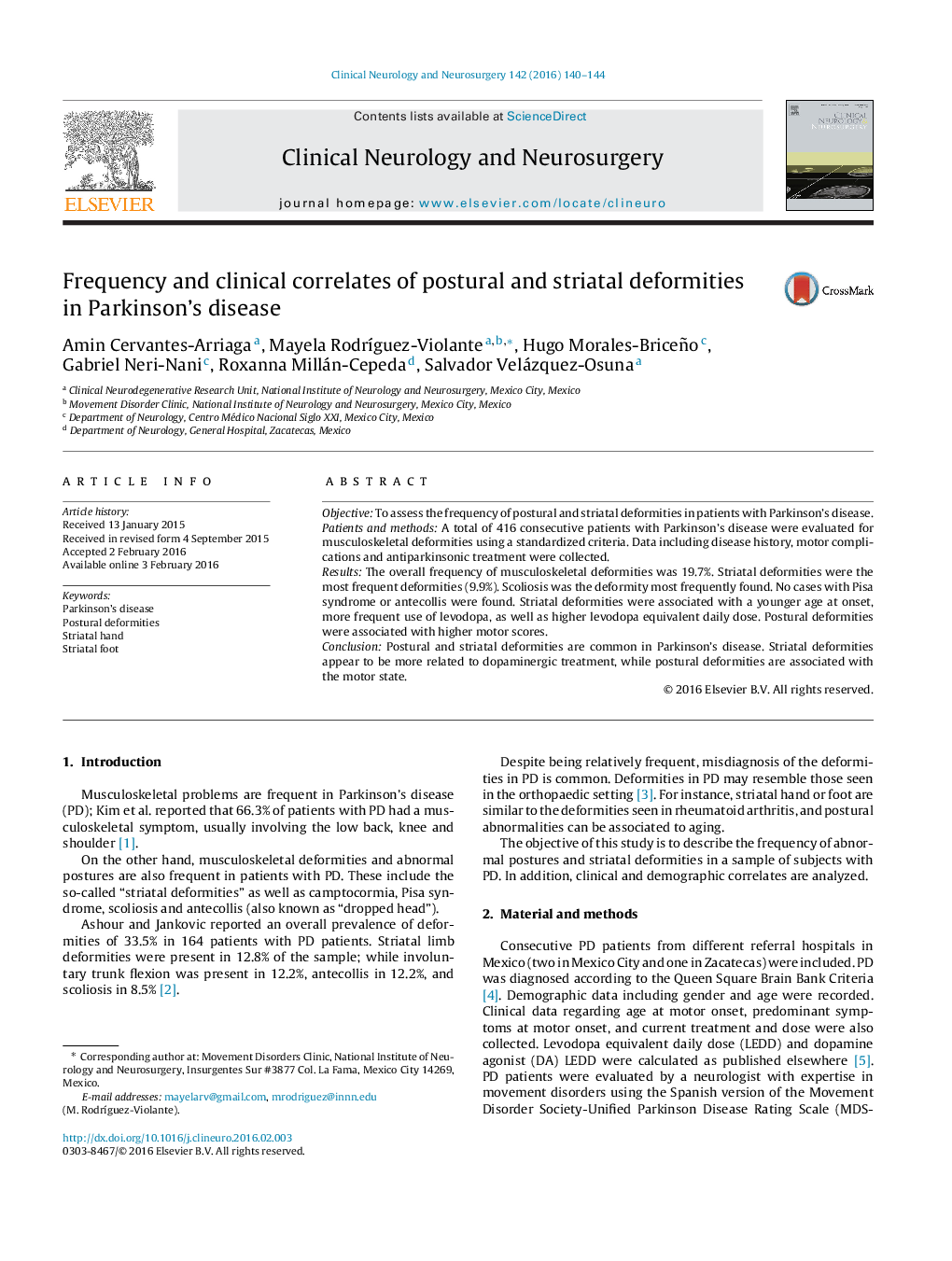| کد مقاله | کد نشریه | سال انتشار | مقاله انگلیسی | نسخه تمام متن |
|---|---|---|---|---|
| 3039562 | 1579680 | 2016 | 5 صفحه PDF | دانلود رایگان |
• 416 patients with PD were evaluated for musculoskeletal deformities.
• The overall prevalence of musculoskeletal deformities was 19.7%.
• Striatal deformities were the most frequent deformities (9.9%).
• Striatal deformities appear to be more related to dopaminergic treatment.
• Postural deformities are associated with the motor state.
ObjectiveTo assess the frequency of postural and striatal deformities in patients with Parkinson’s disease.Patients and methodsA total of 416 consecutive patients with Parkinson’s disease were evaluated for musculoskeletal deformities using a standardized criteria. Data including disease history, motor complications and antiparkinsonic treatment were collected.ResultsThe overall frequency of musculoskeletal deformities was 19.7%. Striatal deformities were the most frequent deformities (9.9%). Scoliosis was the deformity most frequently found. No cases with Pisa syndrome or antecollis were found. Striatal deformities were associated with a younger age at onset, more frequent use of levodopa, as well as higher levodopa equivalent daily dose. Postural deformities were associated with higher motor scores.ConclusionPostural and striatal deformities are common in Parkinson’s disease. Striatal deformities appear to be more related to dopaminergic treatment, while postural deformities are associated with the motor state.
Journal: Clinical Neurology and Neurosurgery - Volume 142, March 2016, Pages 140–144
